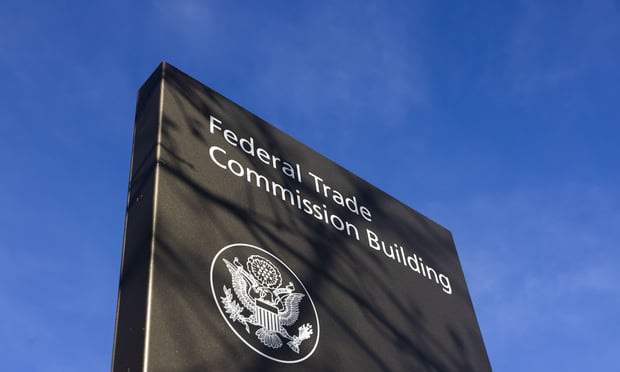 While Abraham Lincoln may have said, “Truth is generallythe best vindication against slander,” many also gain somesatisfaction by filing a defamation suit.
While Abraham Lincoln may have said, “Truth is generallythe best vindication against slander,” many also gain somesatisfaction by filing a defamation suit.
When defamation occurs in the workplace, insurance may or maynot foot the bill if the company is sued. Sometimes coverage hingeson whether the defamed claimant was considered an employee or ifthe defamation occurred in an employment situation.
|For instance, in Peerless Indem. Ins. Co. v Moshe& Stimson LLP, 22 N.E. 3d 882 (Ind. App. 2014), anattorney sued her former law partner for defamation. Moshe andStimson were a sister-brother law partnership, and after Moshe toldStimson that she intended to leave the firm, Stimson—among otherunbrotherly things—began making negative statements about Moshe'sintegrity and competence, so she filed suit against him fordefamation.
|Stimson made a claim under the firm's policy, which was issuedby Peerless, for defense and indemnification. Peerless denied theclaim, stating that the allegations in Moshe's complaintconstituted employment-related practices and were excluded fromcoverage under the employment-related practices exclusion thatincluded defamation. The exclusion applied “whether the insured maybe liable as an employer or in any other capacity.”
|Stimson, though, argued that the exclusion did not apply becauseMoshe had been a partner at the firm, not an employee. He claimedthat in order to be considered employment-related, defamation mustmeet two standards: (1) the author of the defamation must be theplaintiff's superior—defamation by a peer does not constituteemployment-related defamation; and (2) the subject of thedefamation must be the plaintiff's performance during theemployment—an insult by a former supervisor does not constituteemployment-related defamation. Since Stimson provided no citationor authority for these standards, the court did not adopt hisreasoning.
|The court said that “we need not determine in what capacitySarah [Moshe] was employed by the firm. Instead, the issue iswhether Justin's [Stimson's] alleged actions, particularly hisalleged defamation of his sister, were 'employment-related.'”
|Applying plain and ordinary definitions of “employment” and“related,” the court concluded that Moshe's claims against herbrother were related to her job: after she told him she would beleaving the firm, he began making accusations about her personalintegrity and professional competence.
|The court ruled, “The policy at issue was designed to protectthe siblings in suits brought by third parties—it was not meant toprotect one against the other in a suit between the two.”
|The court did not consider Moshe's employment status key to itsfinding, even though Stimson's arguments concerned whether hissister was an employee or a partner. Likewise, the court inRuksznis, v. Argonaut Ins. Co., 774 F.3d 784 (1st Cir.2014) faced similar arguments and came to the same conclusion.
|The Case of the Town Plumbing Inspector
|Frank Ruksznis was the appointed plumbing inspector for the townof Sangerville, Maine, from 1993 until 2010. Each year he wasreappointed for an additional one-year post. Ruksznis describedhimself as an independent contractor—he set his own hours, providedhis own tools, and paid for his own expenses and schooling toupdate his license.
|At a public meeting, Sangerville Selectman Lance Burgess madenegative statements about Ruksznis and decisions he had made whileserving as plumbing inspector. At a different meeting, Burgess tookactions that caused Ruksznis to be removed from his position asplumbing inspector. Ruksznis filed an action asserting a claim ofcommon law slander and received a judgment of $100,000, which heaccepted. After the judgment was entered, Ruksznis brought actionagainst insurer Argonaut to recover for the slander count under thetown's commercial general liability (CGL) policy.
||Argonaut stated that the CGL policy's employment-relatedpractices exclusion applied, but Ruksznis claimed that theexclusion could not apply because he was an independent contractorand not a town employee.
|The court, however, found that “the distinction between anemployee and an independent contractor, critical in the context ofcollecting unemployment benefits and workers' compensation, isimmaterial in the instant case.” The court said that whether heconsidered himself an independent contractor or a municipalofficial, the ordinary meaning of “employment” (to hire or engagethe services of someone) encompassed his relationship with thetown. The court ruled that the defamation was an employment-relateddispute and excluded by the CGL policy.
||
Post-Employment Defamation
|On the other hand, claims for post-employment defamation may netdifferent results, such as in Owners Ins. Co. v. Clayton,614 S.E.2d 611 (S.C. 2015), where the Supreme Court of SouthCarolina ruled that defamation against a former employee did notamount to an employment-related practice.
|Janette Clayton was the manager of the Lands Inn motel. She wasfired for allegedly embezzling funds. After her termination, twoindividuals who called and asked for her were told that she hadbeen fired for stealing funds. No criminal charges were pressed,and she filed suit against Lands Inn for malicious prosecution,slander, and negligence. A jury awarded her $1.25 million.
|Lands Inn was covered by a CGL policy issued by Owners InsuranceCompany. Owners defended the action under a reservation of rights,but filed a declaratory judgment suit stating that the allegationswithin the suits were excluded by the employment-related practicesexclusion.
|The court said that “in determining whether post-terminationdefamations such as the ones here fall within an ERP[employment-related practices] exclusion, courts generally inquirewhether the statement was made in the context of employment, andwhether the statement's content describes the employee'sperformance.”
|The court noted that while the substance of the statementsregarding Clayton's termination were employment-related, thecontext was not. Lands Inn told the callers that Clayton had beenfired and why, but the callers were not potential employers askingabout her work performance, and the information was not told toother employees to explain Clayton's termination.
|Thus, the court found that, because the employment context wasnot present, the employment-related practices exclusion did notapply. Owners was responsible for indemnifying Lands Inn.
|As these cases demonstrate, being in any type of employmentsituation with the insured and suffering defamation can trigger theemployment-related practices exclusion on the CGL form; however,the defamation must be in an employment context.
|—————————-
|Susan Massmann, CPCU, is managing editor ofelectronic publications for the reference division of ALM, theparent company of Treasury & Risk. She may be reachedat [email protected].
|Complete your profile to continue reading and get FREE access to Treasury & Risk, part of your ALM digital membership.
Your access to unlimited Treasury & Risk content isn’t changing.
Once you are an ALM digital member, you’ll receive:
- Critical Treasury & Risk information including in-depth analysis of treasury and finance best practices, case studies with corporate innovators, informative newsletters, educational webcasts and videos, and resources from industry leaders.
- Exclusive discounts on ALM and Treasury & Risk events.
- Access to other award-winning ALM websites including PropertyCasualty360.com and Law.com.
*May exclude premium content
Already have an account? Sign In
© 2024 ALM Global, LLC, All Rights Reserved. Request academic re-use from www.copyright.com. All other uses, submit a request to [email protected]. For more information visit Asset & Logo Licensing.







